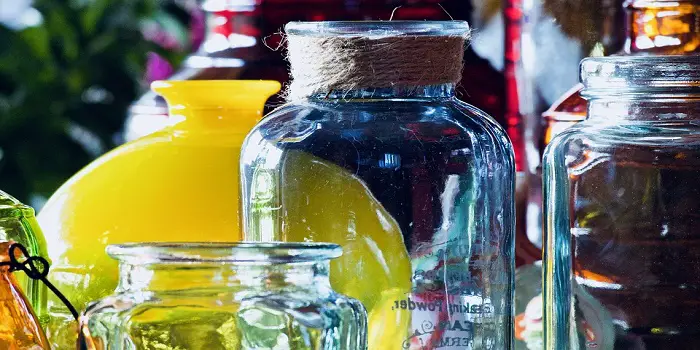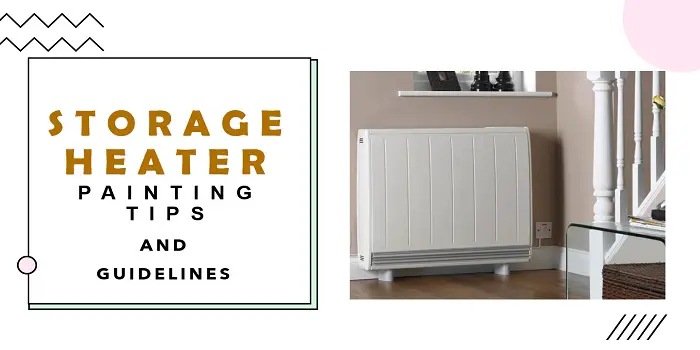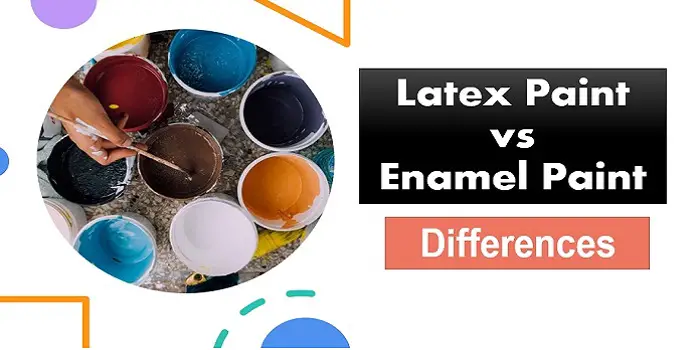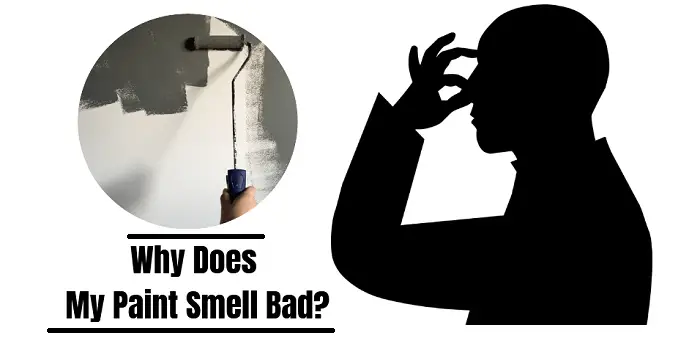
Smelly paints and unpleasant odor, after you have just painted your home can be notorious.
No matter what kind of paint you use and what part of your home you paint, there can be some level of “freshly painted” odor left that you have to deal with.
Most of the time, these paint smells can be due to VOCs (Volatile Organic Compounds), which come from the materials that are used to manufacture oil-based and latex-based paints.
But many times, there can be more to it.
And this is when people complain about their paints smelling like cat pee, rotten eggs, ammonia, or dirty feet.
The growth of bacteria in an old paint bucket is one of the most obvious reasons why paints can smell like bad eggs, pet urine, or ammonia.
This smell can be as strong as hydrogen sulfide, which usually comes from sewage.
And the worst thing is that prolonged exposure to such a bad smell can cause issues like headaches, fatigue, and dizziness.
Experts across the paint industry believe bacteria can grow over time in an old paint bucket and release hydrogen sulfide gas if not stored properly.
And this is usually the problem that turns the old paint odorous, especially the latex ones that contain high levels of water.
What's Here in the Article:
What Makes Paint Smell?
Turns out there are many good reasons for these paints that can turn the wall paints to smell like hell.
While most paints possess a smell like a familiar strong paint odor, there can be paints that produce an unbearable foul smell like rotten eggs for a long.
Few reasons that make the paint smelly are:
1- VOCs
As stated above, the bad paint smell is generally due to the paint’s VOC level.
Volatile organic compounds like formaldehyde can be relatively high for solvent-based oil paints compared to water-based latex paints.
After you have painted the walls or ceilings in the room, the odor gets strong as the thinner solvents in the paint get evaporate into the air.
This is the reason why wet paints smell stronger than dried paints on the surface.
The evaporation process is generally referred to as ‘gassing off and may last to about a few weeks depending on the thinning agents and quality of paint you have used.
Meanwhile, you can try different ways to get rid of the paint smell on walls naturally.
Trying these methods may expedite the process and make your home ready sooner.
2- Surface
The surface you are painting on can be a reason why the paint smells bad or fresh.
Also, it will depend on the polishes or wood paints you use.
Certain wood surfaces you paint, for example, will generally produce a fresh, natural smell that is not so hard and repelling.
In rare cases, if you have painted porous walls (or the walls are exposed to excessive heat or direct sunlight), there can be an ammonia-type odor you can feel.
In many other cases, there can be earthy or musty odors on an already painted old wall if it’s susceptible to an attack by fungi and blue-green algae due to moisture or humidity.
3- Cheap Quality Paints
Non-branded cheaper quality paints, primers, and thinners contain ingredients that can produce a strong, pungent smell, almost like soured milk.
IMO, these cheap paints are meant for nothing more than that.
These lower-quality paints usually contain lots of water and fewer paint pigments and other good stuff that should be present in the paint.
The more water the paint will have, the quicker it can turn smelly due to bacterial growth.
So, it’s good to avoid such cheaper varieties and only go for popular brands like Kilz, Benjamin Moore, Sherwin-Williams, etc.
Some of these brands also manufacture 100% VOC-free paints that are also anti-bacterial.
You can try them along with putting the coats of alkaline sealer as it will work to seal in the bad smells and will avoid molds and bacterial growth.

Are There Paints That Doesn’t Smell?
After working with so many paint brands and varieties, I can say there are many available in the market that will not go bad very easily to smell like decaying or decomposing eggs.
All you need is to ask for them and get the right product you desire.
Some of the best non-toxic paints that don’t smell so strong (or have very little odor) are:
- Benjamin Moore Aura
- Old Fashioned Milk Paint
- Sherwin-Williams Harmony Interior Acrylic Latex Paint
- Green Planet Paints
- Clare Paint
All of these Zero VOC paints come with a very low odor.
Plus, they are also easy to apply and mildew resistant.
Varieties such as Green Planet Paints are manufactured from natural plant oils and they are known for their mineral-based formulas that don’t hurt the environment.
Clare paints also have zero colorants, and are Greenguard Gold certified.
This means they are tested and verified to meet all the highest standards for low chemical emissions.
Few other brands that manufacture Zero VOCs and low-odor paints include BACKDROP, AFM Safecoat, and Earthborn Paint.
What is the Difference Between Low-VOC and No VOC?
The basic difference between the Low-VOC and No VOC lies in the number of volatile compounds they contain.
Paints labeled “Low-VOC” should contain less than 50 grams per liter of VOCs.
Paints labeled “Zero-VOC” should contain less than 5 grams per liter of VOCs.
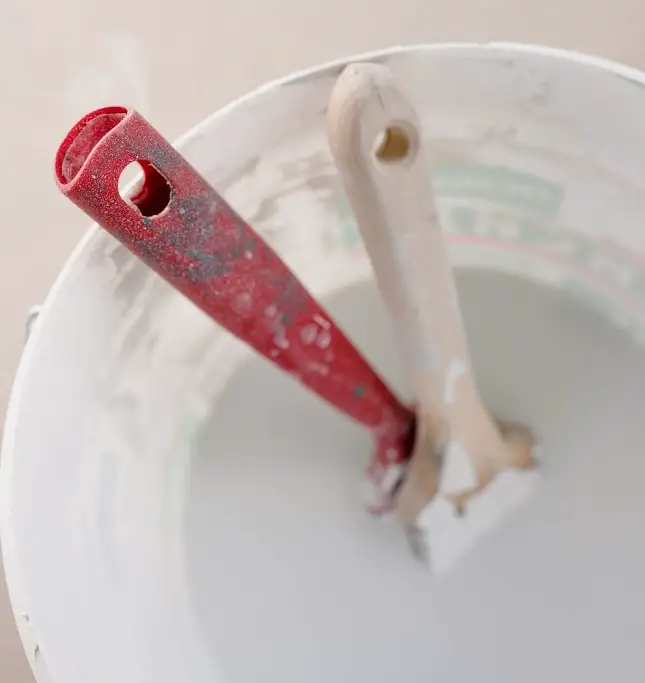
How to Tell if My Paint has Gone Bad?
Just that your paint has developed a funny color and smells like rotten eggs does not mean it has gone off.
Before throwing the stuffed paint away, just confirm if it’s still usable and if you can still use it with some variations.
Usually, the paint cans or drums, when opened and left for a few months, will start forming different layers.
The heavier solids in the paint (that make up the main ingredients) generally sit at the bottom.
And the solvent that is meant to carry the solid stuff settles upon the top of the tin.
In a similar fashion, tints (that are meant to provide colors) also get separated and make the paint appear different color than they usually are.
Many of these dead paints can come back to life and can still be used simply by stirring for a few minutes.
They may smell bad, but you will be OK with them if you just want some of them for doing minor touch-ups.
If, however, the settled paint doesn’t stir well, contains rust particles due to build-up on the tin, or appears to be a solid tar-like material that is hard to mix – it has most likely gone off.
You will need to buy a new one for your use.
-
Can Drywall Be Installed or Painted Backwards?
Technically, yes—you can install and finish your drywall backward. Should you? Probably not, unless you’re feeling adventurous or running low on things to fix. The back side of drywall isn’t exactly the belle of the … Read more
Does paint have an expiry date? Although you may not find an actual expiration date on the paint package, house paints do expire if kept for very long. But when will they get expired will practically depend on the type of paint you are storing, the condition you are storing in, and what is their shelf life?
What can Happen if You Use Old Paint?
On average solvent-based paints come with a shelf life of around 15 years.
Latex paints have a shelf life of about ten years.
Unopened cans of paint can last even longer when stored correctly under moderate climatic conditions.
If the paint can is unopened, it’s most likely unused and in a usable state.
After opening the can, even if you find a “skin” formed on the paint’s surface, you can remove it carefully, stir the paint, and use it without any problem.
But remember, if lumps are seen in the paint, it’s no longer usable – you should avoid using such paint.
It’s good to discard and dispose of this type of old paint according to the local guidelines of your area.
If you choose to use this old paint on your walls or ceilings, it may peel off very fast making all your efforts go wasted.
Plus, old paints that go bad can also emit a very high level of dangerous fumes that can make you sick.
While the fumes from any such latex or enamel paint are not so strong as to poison the body, they can irritate the eyes, nose, and throat of your family members very easily.
Especially if there are small children or elders in your home, it can cause conditions like nausea, headaches, dizziness, and many other breathing problems.
Final Thoughts
When choosing paints, most of us look at the colors and nothing else.
However, besides looking at the right paint shades, it’s important to check the number of volatile organic compounds (VOCs) it contains.
Also, consider checking how old is the paint can and whether it’s a sealed pack or has already been opened any time before.
All these factors will together decide how smelly your paint turns out to be when you apply them to your walls.
Share the post "Why Does My Paint Smell Like Rotten Eggs?"

Douglas Becker (aka Painter Doug) has over twenty years of experience as a painter in Adkins, Texas. At present, he resides in Florida with his family.
From painting multi-storeyed houses, condos, and apartments to large commercial buildings and small offices, he had served various customers in areas not only in Adkins but also in Southwest Florida, Sarasota, Naples, and many more. To know more about him check here.

